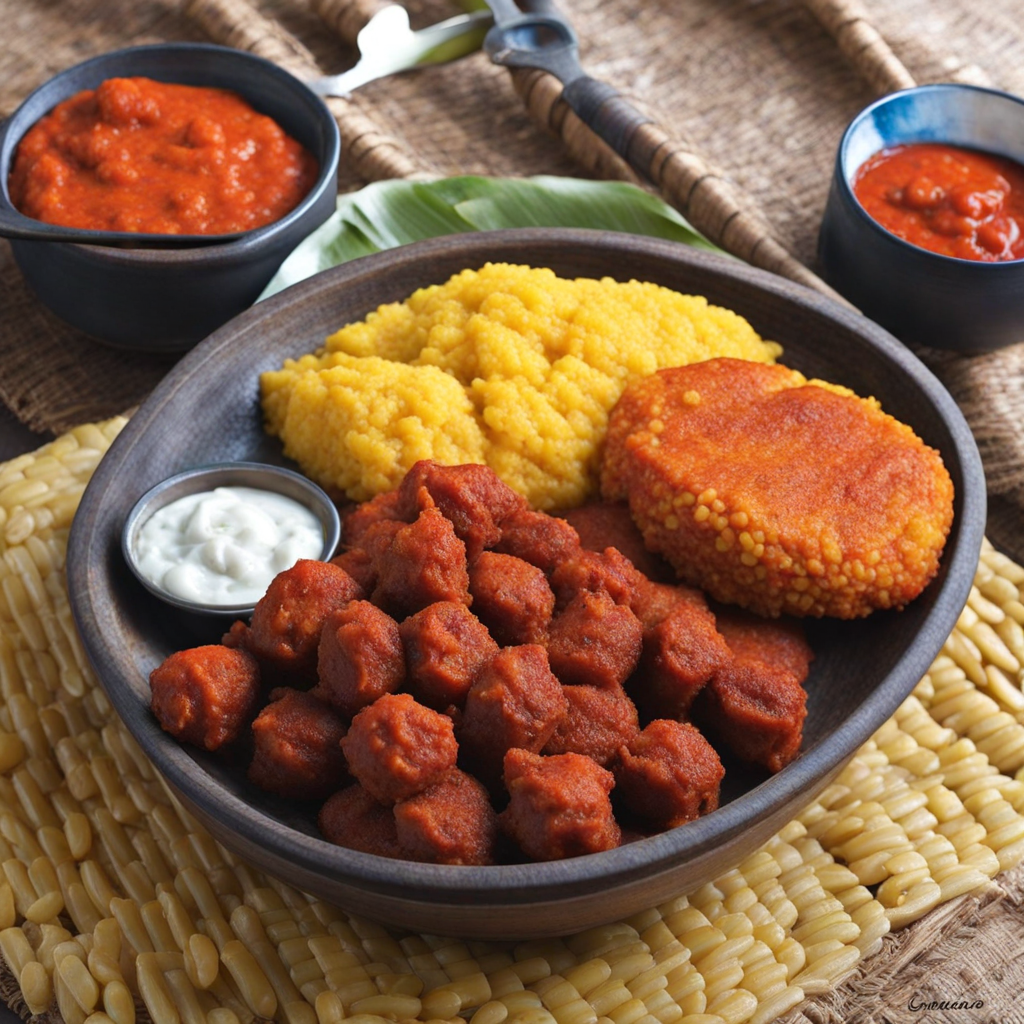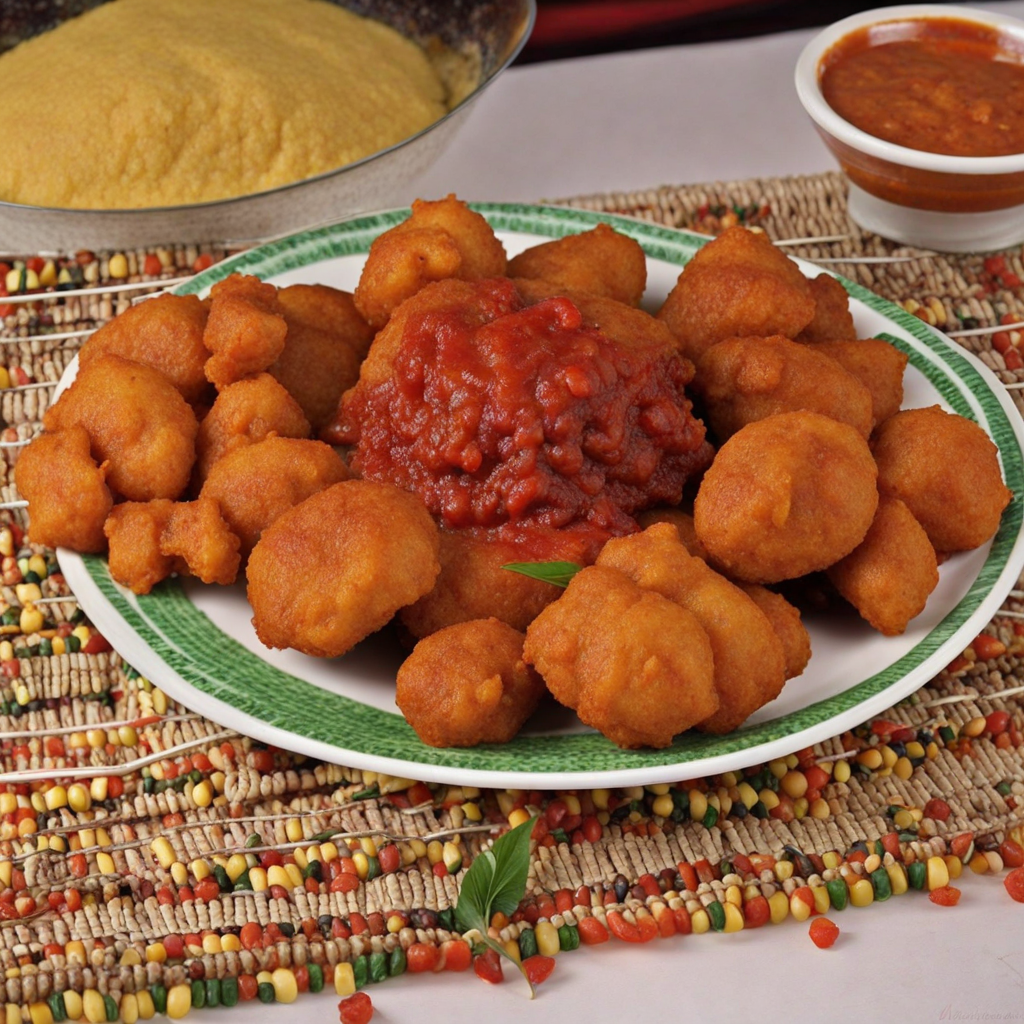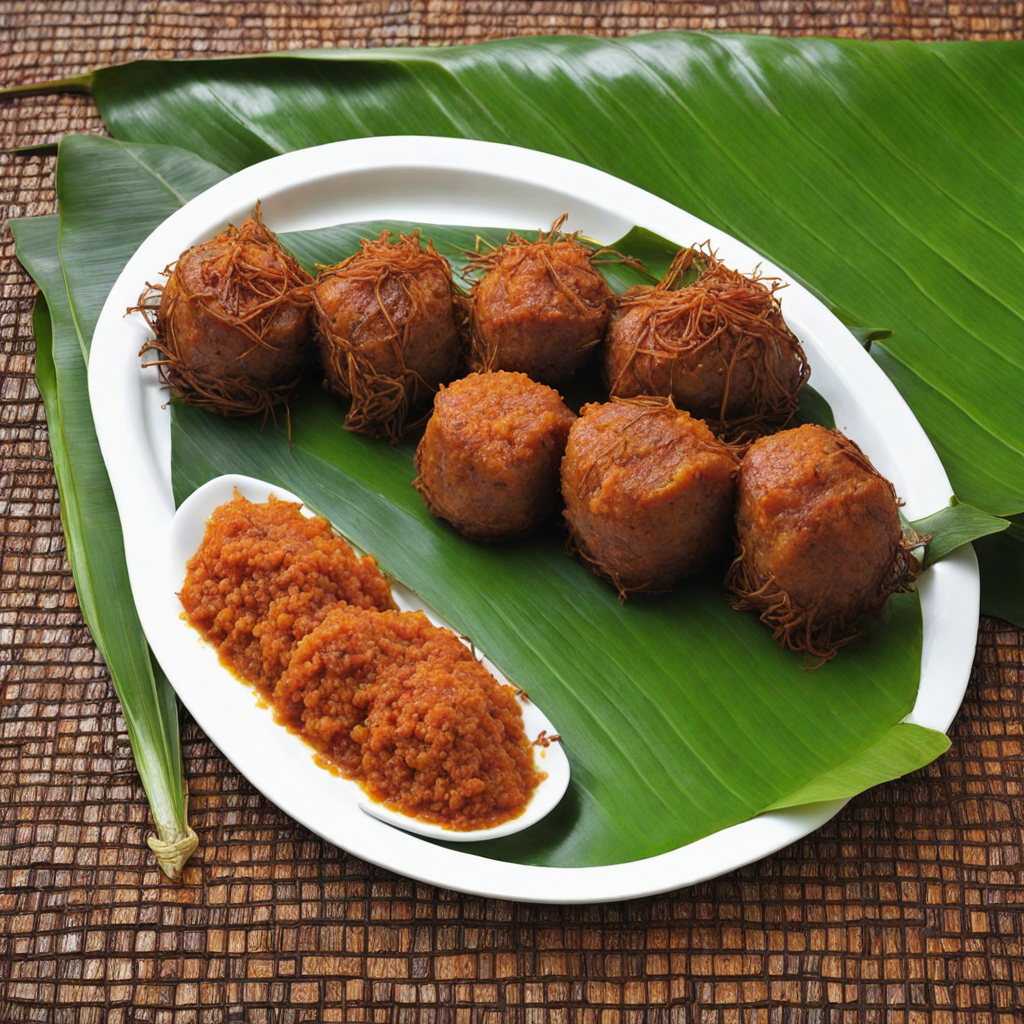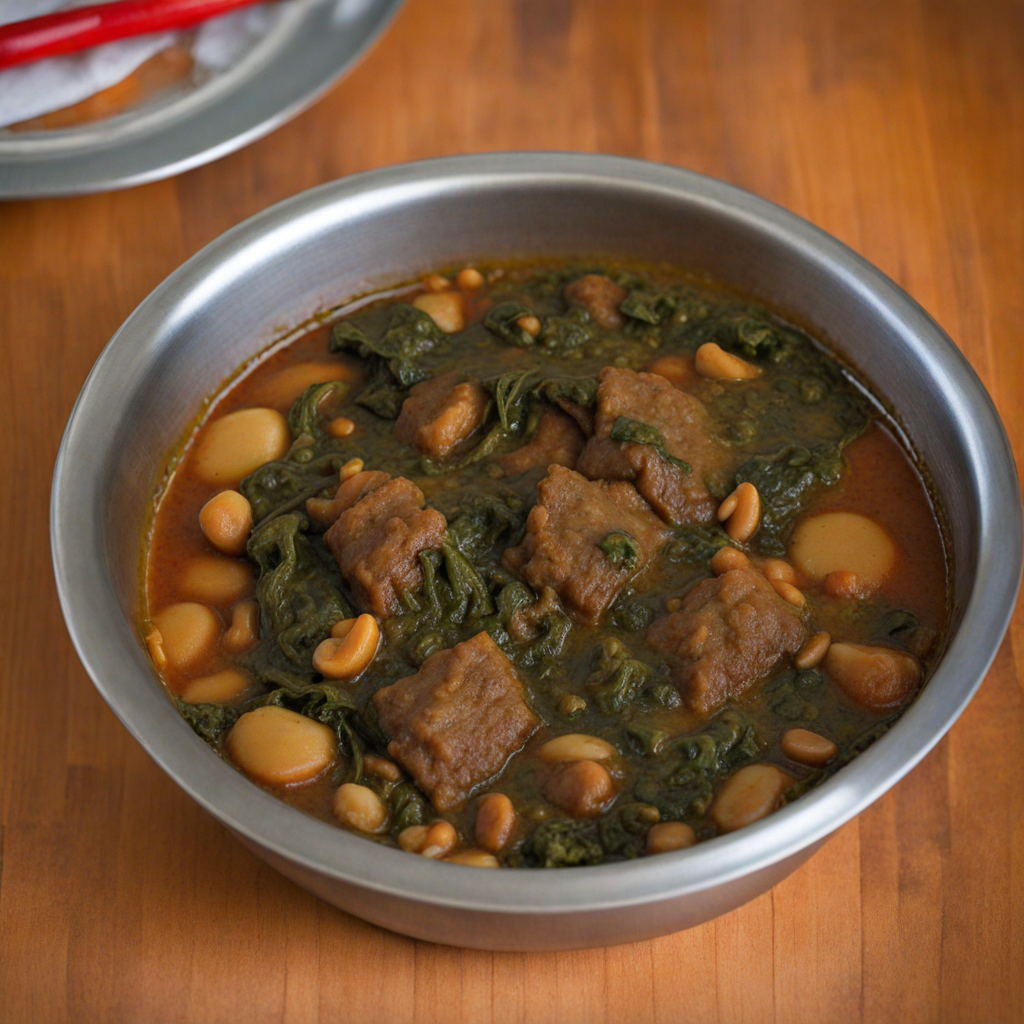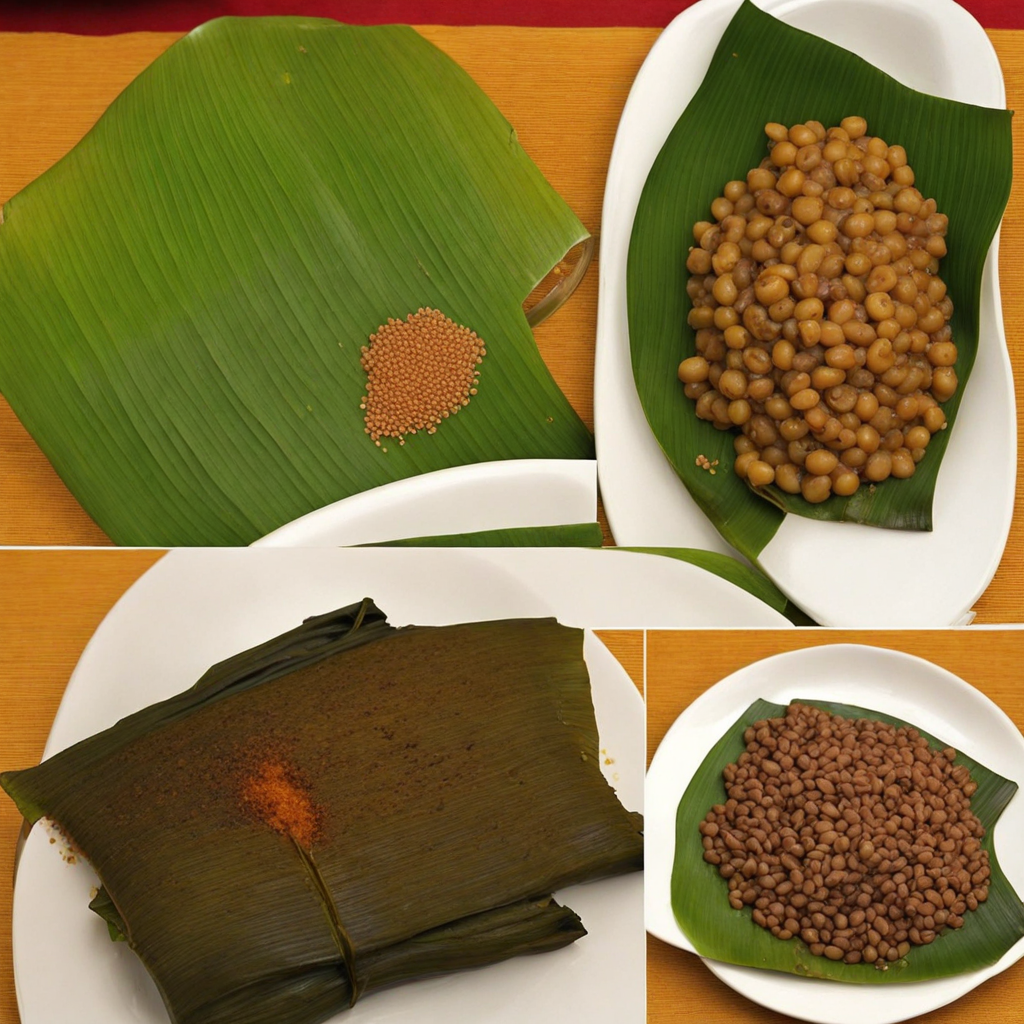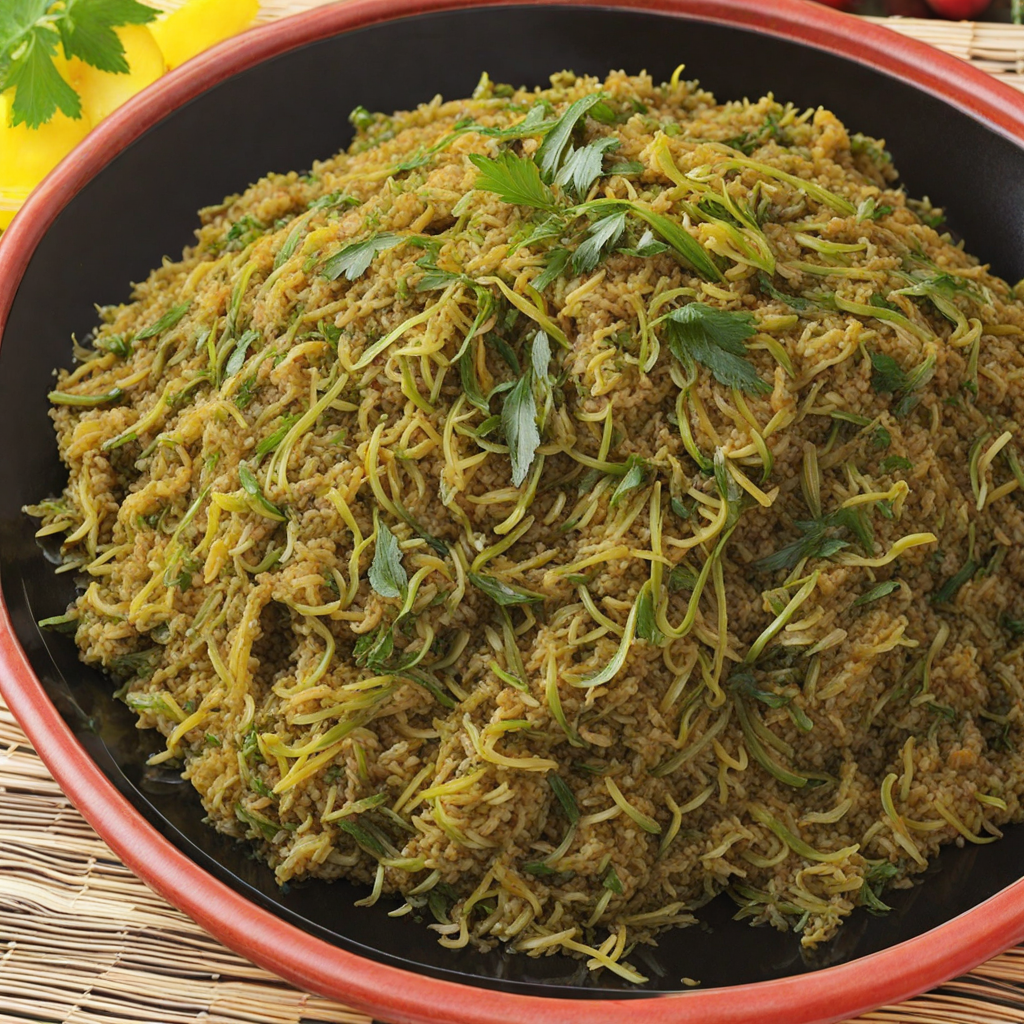Sanga
Sanga is a traditional Cameroonian dish that embodies the rich culinary heritage of the country. This savory delight is primarily made from groundnut paste, which infuses the dish with a nutty flavor and creamy texture. The base of Sanga often consists of a combination of vegetables, such as okra and spinach, which are cooked down to create a thick, aromatic stew. The vibrant colors of the vegetables not only make the dish visually appealing but also contribute to its nutritional value, making it a wholesome choice for any meal. One of the standout features of Sanga is its versatility; it can be enjoyed as a vegetarian option or paired with proteins like fish or chicken to enhance the flavor profile. The dish is often seasoned with local spices and herbs, which give it a unique depth of flavor that reflects the diverse tastes of Cameroon. The combination of spices creates a delightful balance of heat and earthiness, making each bite a flavorful experience. Sanga is typically served with a side of staple foods such as plantains or rice, allowing for an enjoyable contrast in texture and taste. The dish is not just a meal; it represents the communal spirit of Cameroonian dining, often shared among family and friends. For those looking to discover new flavors, Sanga offers a delicious glimpse into the heart of Cameroonian cuisine, inviting food lovers to explore its rich and diverse tastes.
How It Became This Dish
The Sanga: A Culinary Treasure of Cameroon #### Origins The Sanga, a beloved dish in Cameroon, is a testament to the country's rich culinary tapestry, woven from diverse ethnicities, traditions, and historical influences. The term "Sanga" refers to a type of sandwich made with meat, vegetables, and sauces, typically served on bread or wrapped in a flatbread. Its roots can be traced back to the various indigenous groups in Cameroon, particularly among the Bantu-speaking peoples, who have long had a tradition of combining local ingredients into hearty meals. Historically, the Sanga may have evolved from the need to create portable meals that could be consumed during long journeys or communal gatherings. As early as the 15th century, traders and explorers moved through Cameroon's lush landscapes, exchanging goods and culinary practices. The introduction of bread-making techniques by European colonizers in the 19th century significantly influenced the development of the Sanga. French and German settlers brought their own culinary traditions, which mingled with local practices, resulting in a unique fusion that characterizes the Sanga today. #### Cultural Significance The Sanga is not merely a meal; it holds cultural significance among Cameroonian communities. It is often associated with celebrations, family gatherings, and street food culture, making it a dish that brings people together. In urban centers like Douala and Yaoundé, Sanga vendors can be found on bustling street corners, serving locals and visitors alike. The vibrant atmosphere surrounding these vendors is a reflection of the communal spirit intrinsic to Cameroonian culture. The Sanga has also become a symbol of national identity, representing the culinary diversity of Cameroon. With over 250 ethnic groups, each contributing their own culinary traditions, the Sanga reflects the country's multifaceted identity. It incorporates local ingredients such as grilled meats (often chicken, beef, or fish), fresh vegetables like tomatoes, lettuce, and onions, and a variety of spicy sauces that cater to different palates. Moreover, the preparation and consumption of Sanga can be seen as a rite of passage. Young people often learn to make Sanga from their elders, ensuring that this culinary tradition is passed down through generations. This communal cooking experience fosters a sense of identity and belonging, reinforcing the bonds between family members and the broader community. #### Development Over Time As Cameroon has undergone political and social changes, so too has the Sanga. The dish has adapted to modern tastes while still retaining its traditional roots. In the late 20th century, globalization began to influence Cameroonian cuisine, introducing new flavors and techniques. The Sanga has embraced these changes, evolving from a simple street food into a gourmet offering in restaurants, where chefs experiment with fusion recipes that incorporate international influences. In addition to the traditional preparation, variations of the Sanga have emerged. While the classic Sanga is made with grilled meats, contemporary versions may include vegetarian or vegan alternatives, reflecting a growing awareness of health and dietary preferences. Ingredients such as tofu, chickpeas, and a plethora of vegetables are now common, catering to a more diverse clientele. The rise of social media has also played a role in popularizing the Sanga. Food photography and sharing platforms have allowed local vendors and chefs to showcase their creations, attracting attention from both locals and tourists. This visibility has led to a renaissance of traditional dishes like the Sanga, as people seek authentic culinary experiences when visiting Cameroon. Furthermore, the Sanga has gained international recognition, appearing in food festivals and cultural events outside of Cameroon. Chefs and food enthusiasts have begun to explore the flavors of Cameroon, and the Sanga, with its rich combination of tastes and textures, has become a favorite among those seeking to experience the essence of Cameroonian cuisine. #### Ingredients and Preparation The traditional Sanga preparation involves a few key components. The bread used is often a baguette or a local variant akin to French bread, which is crusty on the outside and soft on the inside—ideal for holding the flavorful fillings. The meat is typically marinated in a blend of spices, including garlic, ginger, and various chili peppers, before being grilled to perfection. Once the meat is ready, it is sliced and placed inside the bread along with fresh vegetables and a selection of sauces, which can range from mild to fiery hot. These sauces often contain ingredients like ground peanuts, tomatoes, and local spices, creating a complex flavor profile that excites the palate. The assembly of the Sanga can be an art form in itself, with vendors often showcasing their skills by quickly preparing multiple orders while engaging with customers. The final product is a visually appealing, hearty meal that is both satisfying and flavorful—a true reflection of Cameroonian hospitality. #### Conclusion In conclusion, the Sanga is more than just a sandwich; it is a cultural artifact that embodies the history, diversity, and communal spirit of Cameroon. Its evolution from a simple portable meal to a celebrated dish in both street food and gourmet settings mirrors the dynamic nature of Cameroonian society. As it continues to adapt to modern influences while honoring its traditional roots, the Sanga remains a culinary treasure that connects the past with the present and celebrates the enduring bonds of community. Whether enjoyed on a busy street corner or at a festive gathering, the Sanga is a delicious reminder of the rich heritage and vibrant culture of Cameroon.
You may like
Discover local flavors from Cameroon


